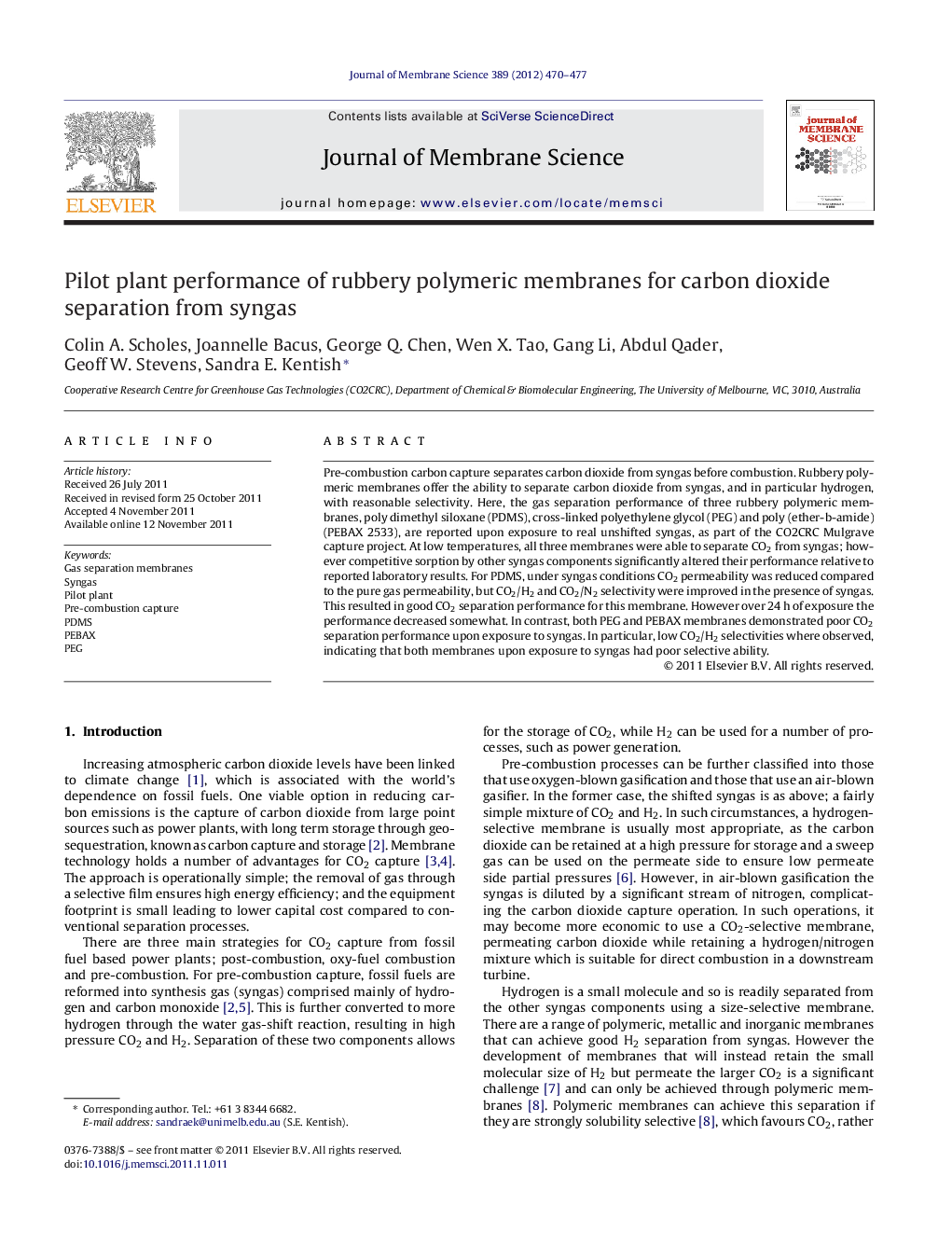| Article ID | Journal | Published Year | Pages | File Type |
|---|---|---|---|---|
| 635296 | Journal of Membrane Science | 2012 | 8 Pages |
Pre-combustion carbon capture separates carbon dioxide from syngas before combustion. Rubbery polymeric membranes offer the ability to separate carbon dioxide from syngas, and in particular hydrogen, with reasonable selectivity. Here, the gas separation performance of three rubbery polymeric membranes, poly dimethyl siloxane (PDMS), cross-linked polyethylene glycol (PEG) and poly (ether-b-amide) (PEBAX 2533), are reported upon exposure to real unshifted syngas, as part of the CO2CRC Mulgrave capture project. At low temperatures, all three membranes were able to separate CO2 from syngas; however competitive sorption by other syngas components significantly altered their performance relative to reported laboratory results. For PDMS, under syngas conditions CO2 permeability was reduced compared to the pure gas permeability, but CO2/H2 and CO2/N2 selectivity were improved in the presence of syngas. This resulted in good CO2 separation performance for this membrane. However over 24 h of exposure the performance decreased somewhat. In contrast, both PEG and PEBAX membranes demonstrated poor CO2 separation performance upon exposure to syngas. In particular, low CO2/H2 selectivities where observed, indicating that both membranes upon exposure to syngas had poor selective ability.
► Membranes tested with unshifted syngas generated from air-blown coal gasification. ► PEG and PEBAX showed poor CO2/H2 selectivity. ► PDMS performed better with reduced permeability but enhanced selectivity. ► Performance declined somewhat over 24 h of testing.
